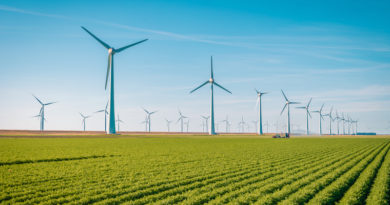
We need to build a European Green Industrial Deal
In February, industrialists gathered in Antwerp to present a ten-point plan for a so-called ‘Industrial Deal’, which should complement the Green Deal and strengthen the competitiveness of European industry. I believe that these are two sides of the same coin. The green transformation of our industrial base provides an opportunity to strengthen European autonomy, reverse de-industrialisation, bring more jobs and help us meet our climate and environmental targets. I think there is only one way for Europe to move forward and we have to be unequivocally clear about it: we have to build on, reinforce and strengthen the Green Deal and use the new legislative term to build a European Green Industrial Deal.
We have to realize that the future of our economy is green.
Europe has entered a global race for green technologies, competing with production power in China and investments, of a scale we have never seen before, in the US. In this race, there is no such thing as a ‘pause button’, as we have seen with the race for electric cars. Europe has to gear up, or lose its climate pole position, and with it, our industrial prosperity and strategic autonomy. Our transition should not be entirely made in China.
This won’t be easy. Europe’s electricity production will need to multiply, and European climate investments will need to increase by threefold. We will have to modernize energy intensive sectors like cement, steel and chemicals, build up new green manufacturing industries like wind, heat pumps, electrolyzers and coordinate the scale down of industrial activities which have little to no future in a fossil free society, such as chemical fertilizers and refinery capacity.
Until now, Europe has mainly trusted the (carbon)market to do the job. Unfortunately and despite recent improvements, we can now conclude this approach is not working. The price incentive is uncertain and still too low, partly due to free allowances. But more importantly, industry is facing limited demand for climate friendly alternatives, insufficient infrastructure and renewables and high electricity prices. National governments trying to mitigate these issues are caught in a subsidy race that is pitting countries against each other. Not only is this causing unfair competition on the single market, keeping every national industry afloat is also keeping major inefficiencies in the system, while keeping out clean-tech innovation.
Europe, therefore, needs industrial policy to support this transition.
Industry needs certainty, stability and predictability to make the right investments and the support to deal with geopolitical risks and environmental costs. Both the European Commission and industry have realized this and are calling for action.
The upcoming reports of Letta and Draghi will further underline the need for action, making it one of the top issues for the European elections and new Commission.
In the current political environment, there is however a huge risk of taking the wrong route: easing environmental targets and giving more room for national state aid. Let’s be crystal clear: this is not industrial policy, but a free pass for industrial laggards. Just leaving the industrial transformation to the market and member states will not solve our challenges nor put Europe in the global front seat of this transition.
Instead, we need more coordination of European industrial decarbonisation and clean tech investments and strengthen joint planning procedures for energy infrastructure. We also need more regulation: to set up lead markets and create demand for clean and circular materials and products. For instance by requiring green steel in cars, reduced clinker in cement or recycled plastics in products. Green leadership should be rewarded, including by strengthening the price signal of ETS and CBAM, but also by shifting energy taxation from electricity to fossils.
We also have to address the elephant in the room: we need to close the climate investment gap in industry.
Not only do we need to spend much more on infrastructure, renewables and electrification to get to the climate targets, we also need to close the gap with the US and China, who massively outperform the EU in clean tech investments. With the Recovery and Resilience Facility cliff edge in 2027, we need a discussion on a new investment vehicle. Part of this money should be used for direct and easily accessible support for the transformation of industry and scale up of clean-technologies. However, with money comes responsibility: we should only support companies with a clear transition plan and on the basis of strong social conditionality, to make workers benefit from the modernization of our industrial base.
This is not a simple agenda, fitted for easy one-liners and the rhetoric of blame. It needs politicians willing to cross party lines, to cooperate and set aside self-interest. But by merging our climate and economic interests into one comprehensive strategy, it has the potential to be one of the strong underlying stories of the next mandate. It is high time for a European Green Industrial Deal, let’s build it together.




